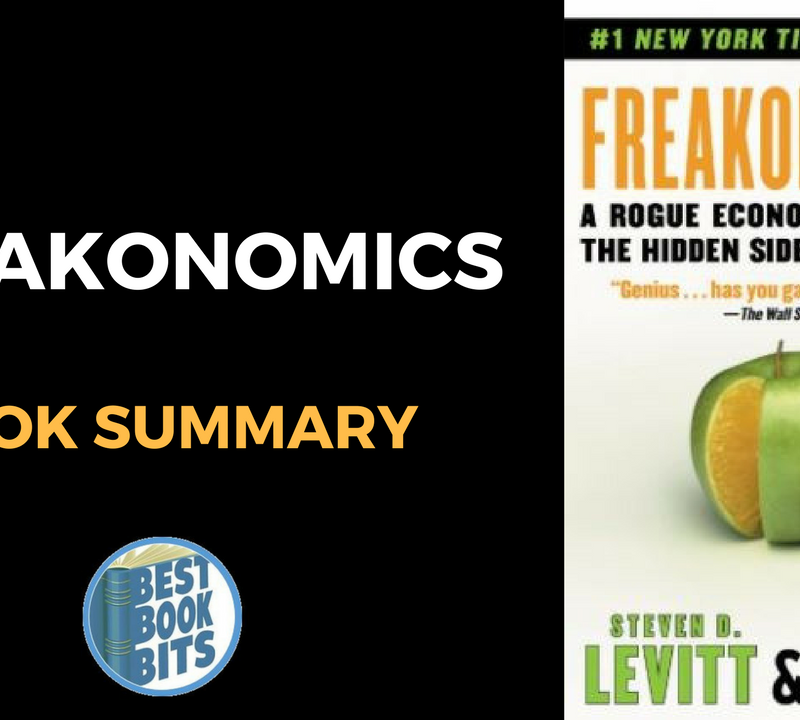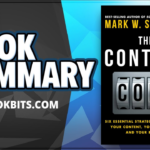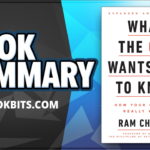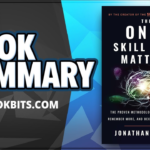FOLLOW US HERE > |YouTube | Podbean | Website
💡 Why Women Buy: How to Sell to the World’s Largest Market by Dawn Jones | Book Summary
Discover how to connect, communicate, and sell more effectively to the world’s most powerful consumers — women. In this summary of Why Women Buy by Dawn Jones, we break down the psychology, motivation, and emotional triggers behind women’s buying decisions.
Whether you’re in sales, marketing, or business, understanding how women make purchasing choices is the key to success. Learn how to build trust, craft the right message, and create a customer experience that resonates.
💬 In this summary, you’ll learn:
The key differences between male and female buying behavior
How emotions influence women’s purchasing decisions
Practical communication strategies for marketers and sales professionals
How to build authentic connections that lead to brand loyalty
👩💼 Empower your marketing strategy and unlock the full potential of the world’s largest market — women.
📚 Watch now to master the art of selling through understanding, empathy, and connection!
Why Women Buy: How to Sell to the World’s Largest Market by Dawn Jones
Why Women Buy provides insight into the buying process and equips readers with the best sales techniques for closing deals with women. The reader will gain the confidence to sell successfully to this $4 trillion market segment.
Introduction
My goal in sharing the techniques for selling to women is to help you be more intentional and effective in your sales process with women while operating with the highest degree of integrity.
When you are more cognizant of your thoughts and intentions towards women, you will be better prepared to handle obstacles and overcome objections that arise throughout the sales process.
Chapter 1 – Recognize How Women Differ from Men
Consumer trend expert, Faith Popcorn, says, “Companies think they’re marketing to women, but they’re not. They’re not talking to women. They don’t know how to talk to women. They really don’t realize that women have a separate language and a separate way of being.”
When you’re talking to a woman in the selling process, remember there is a relational aspect, even if you’re asking her questions. She wants to know at the very beginning of that process that your questions are genuine.
She wants to know that you are real, sincere, and unpretentious. She wants to know you’re going to ask questions that are relevant to her. She wants to know that you care about her.
Step One: Offer an initial solution idea
Step Two: Explore underlying concerns
Step Three: Decide on a plan of action
Chapter 2 – Overcome the Fear of Sales
This is one of my favorite topics because I used to be terrified of certain aspects of the sales process, such as making sales calls. I would have rather had a wasp fly into my car while I was driving down the highway than pick up the phone or walk into an office and make a sales call to some unknown organization—the dreaded cold call. Though I was an able salesperson, I was afraid to pick up the phone and make a simple call.
When it comes to overcoming the fear of sales and replacing the old unproductive patterns of the past with new productive ones, there are three important elements.
Know-how: Knowing how to sell successfully.
Leverage: Leverage is something that propels you beyond your fear.
Vision: Vision is what motivates you to take action even when you don’t feel like it.
Chapter 3 – Operate with Integrity
Perhaps you have heard somewhere in life, “Watch your thoughts; they become your words. Watch your words; they become your actions. Watch your actions; they become your habits or behaviors. Watch your habits and behaviors because they become your character, and watch your character because it’s who you’ve become.”
If a woman believes the salesperson she is working with is disingenuous, she is more inclined to stop the sales process and leave without her prize. This can happen in several ways. She might bring the conversation to a close by saying she’s not interested at this time. Or she could say that she’ll have to come back later. She might even flat out ask for another salesperson or the sales manager.
For most women, the sales process is more than a transaction, depending on the product or service, whether cars, computers or cosmetics, it’s an experience. The bigger the ticket price, the bigger the experience she wants to enjoy—to relive those memorable moments like watching a favorite movie; she wants to savor that enjoyment and tell her friends about it. Anything that interferes with her experience spoils the movie. Which explains why she’d rather leave that metaphoric movie rather than put up with the games of an insincere or incompetent salesperson during her sales experience. A woman’s expectation of experiential service has an impact in retail stores and in the work- place.
The way to gain mastery in sales is to learn, practice, and teach.
Learn your craft: Take the necessary time to study from those who have gone before you. Listen to, watch, read, and participate in teachings that will hone and sharpen your sales skills.
Practice what you learn: Apply the knowledge you gain to your day-to-day work and life.
Teach what you’ve learned: By helping others learn and grow, you come to a whole new level of mastery within your craft.
The way to incorporate learning, practicing, and teaching into your life is to implement what I like to call the triple T’s: tips, techniques, and tools.
Chapter 4 – Ask Great Questions
Many sales-people have experienced a time when they wished they could have taken back their answer or added a great question in conjunction with their answer to keep the conversation flowing and been more effective in their communication. Her “problem” was that her questions weren’t answered, or the right ones weren’t asked. Asking great questions is especially important when selling to women because women tend to ask more questions than men and expect questions to be answered and reciprocated during the sales process.
“Did you know there are three types of questions you can ask for successful selling?” I knew when I asked you this question you could only give me one of two answers: either no or yes. This type of question, you may know, is commonly called a closed-ended or yes or no question.
The second question I asked you was, “What are they?” What are the three types of questions you should ask? This is called an open-ended question. It’s open-ended because you have no idea how the person is going to reply unless you ask a question that has only one main answer, such as, “What is your email address?”
Let’s move to the third question: “Do you want me to give you a clue or do you want me to give you the answer?” This is an either/or question because you’re giving your listener options, like a multiple-choice question. I label these blue questions because blue is like the ocean. It’s vast. It’s unending. It’s flowing. It’s moving.
Chapter 5 – Integrate All Four Communication Styles
The four communication styles are: verbal, visual, tactile (hands-on), and written word. Let’s take them one at a time.
Verbal. According to the University of Missouri, 44 percent of the people you communicate with need to hear instructions. Here’s the challenge. If that’s the only method of communication or sales that you’re using, they need to hear what you’re saying six to ten times.
Visual. This is the fastest way to teach some- one a concept. YouTube and internet videos are so popular because they show you how to do some- thing just like that—in the blink of an eye or the watching of a video clip.
Tactile. This is the best way for people to remember something.
Written Word. According to the Literacy Company, the written word is one of the most challenging learning styles because most adults are reading at a grade school level. Most adults are still reading one word at a time.
Women tend to place a higher value on establishing a relationship and a high-quality buying experience than they do on being loyal to a product or its price.
Chapter 6 – Sell to the Different Personality Types
You’ve got the direct driver type of person. You have the thinker/analyzer person. You have the social extrovert or the innovative type of person. Then you have that relational person.
Direct, driver type people tend to be fast-paced, bottom-line, get-to-the-point. These are your natural leaders. They are effective decision makers.
The thinker-analyzer personalities tend to be more detailed, meticulous, and accurate. They like things in order. I like to say they were born with a drop-down menu in their head. They have processes, and they love to have a place for everything.
The socializer or the social extroverts are creative and innovative people who tend to be fun loving, energetic, expressive, spontaneous, and the life of the party.
Then that relational person tends to be pretty pleasant, friendly, dependable, and calm. They often take on the role of the peacemaker.
Chapter 7 – The Four Stages of Competency
Knowing where you are in your competency level of understanding your audience, the person you’re selling to, and even yourself, is the final technique in this book and the first step to building skill.
Yet there are parts of the sales process that just don’t come together for you. What I want you to think about as I discuss the four stages of competencies is where you are in the different stages of your life, and where your clients are in their understanding of what you’re trying to sell them.
Stage 1: Unconscious Incompetence. This is where you don’t know what you don’t know, and you don’t know that you don’t know it. Name an area in your life where you are unconsciously incompetent. It’s a trick question. You can’t name something you don’t know that you don’t know because…you don’t know it! These are your blind spots.
Stage 2: Conscious Incompetence. This is where you get, what I like to say, the wake-up call. You now know there is something you don’t know that you didn’t know. Just as important, you know everybody around you knows that you don’t know it. Welcome to the wake-up call. With conscious incompetence, it’s embarrassing when you realize you don’t know something you didn’t know, just like in the car situation, you remember all the things you said to the driver that were totally out of line.
Stage 3: Conscious Competence. This is where you take the wake-up call, identify what needs to be changed, and implement the steps to change it.
Stage 4: Unconscious Competence. This is where you’re just doing things naturally without thinking—you have formed great habits for life.
BONUS – Confidence in Selling to Women
Keep in mind that selling to women includes being confident. Now this is not to be confused with being cocky or arrogant, or faking it until you make it. This is just being confident. Coming in knowing that you are listening, you are prepared to learn, and you are also prepared to teach your client what they need. Whether you are displaying this confidence over the phone, or over the Internet, face-to-face, or when sending emails and correspondences, being confident is essential when it comes to successfully selling to a woman and making a living from your talent.
Confidence comes across in four ways including: your voice, your words, your facial expressions, and your credibility.
Voice. Your voice should be melodic yet professional
Words. Your voice says more than your words.
Facial Expressions. The third element in boosting your confidence includes your facial expressions because what’s not being said is being heard.
Body Language. Please note that women’s body language does not mean the same things that men’s does.
Listening. Men listen for facts and figures, often more focused on getting the best deal. Women want the complete story and are more interested in learning about quality and getting the right product or service to suit their needs.
Credibility. The final element of being confident when selling to women is your credibility. Being credible allows the person you’re connecting with to start building trust with you.













